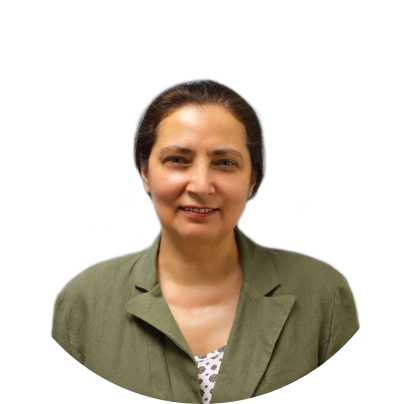
Speech & Language Therapy
What is Speech and Language?
In a nutshell, speech is a movement that uses your mouth and voice to make sounds in a specific order to form words. To produce speech sounds, children need to control and coordinate their breath, voice, jaw, lip, and tongue movements. Clear and fluent speech includes balanced development in three areas: articulation, fluency and voice.
Articulation: Typically some speech sounds (e.g., b, p, m) appear earlier than others (e.g., sh, ch, r). When a later sound does not come on time, specialists call it an articulation error and recommend consulting a speech therapist. Sometimes sound errors may form patterns. For example, a child may drop final sounds in words (“cat” becomes “ca”) or delete unstressed syllables in long words (“eLEphant” becomes “ephant”). Such patterns are called phonological processes. These are the “tricks” most toddlers use to simplify adult’s speech. Articulation errors and phonological disorders decrease speech clarity making it hard for people to understand the speaker. If the above mentioned symptoms persist when a child turns 3-4 years of age, therapists call it a phonological process disorder and recommend a treatment.
Fluency refers to the rhythm and “flow” of speech. Inappropriate pauses, hesitations, repetitions of sounds, syllables and words disrupt the natural “flow” of speech and make it difficult to perceive. Many children undergo a period of natural dysfluency when their speech erupts. If the problem continues after several months to a year, this is called stuttering and we recommend fluency therapy.
Voice is turned on when we bring together vocal folds during exhalation. Let’s try this together. Say “aaaaaa…” You just heard your voice. When we “turn off the voice box”, i.e. open vocal folds, we speak in a whisper. Overusing or misusing of the vocal folds may result in hoarseness and loss of voice. Voice therapy involves an individualized vocal exercise program and a voice diet.
At the FirstRowe Speech & Feeding Center, our specialists develop effective strategies that facilitate your child’s speech, language and learning development. We use a number of programs and approaches to treat specific speech conditions:
Articulation and Phonology Therapy: PROMPT, the Cycles Approach, Straight Speech, Integral Stimulation, Kaufman Speech to Language Protocol
Fluency Disorders/Stuttering Therapy: The Lidcombe Program
Voice Therapy: The Voice Monsters
Language is a system of both verbal (speech) and nonverbal (body language, gestures) means of communication for a variety of social purposes, such as getting attention, requesting, rejecting, turn-taking, etc. During first 5 years of life, intensive changes occur in three areas of language development: receptive language, expressive language and social language, or pragmatics.
Poor comprehension, such as difficulty understanding others, keeping up in a conversation and following directions without gestures, indicates that a child is experiencing difficulties in the receptive language area. Next time you talk to your child, pay close attention to the way you communicate. Try to answer some helpful questions. Do you use many gestures (e.g., an extended hand for “give me”)? Does your child track your eye gaze before giving you what you asked? Do you tend to speak slower using simple sentences? Do you mostly talk about objects in the child’s immediate environment rather than those that are not within a field of view? Children with comprehension issues often learn to compensate by paying close attention to adults’ body language and gestures, memorizing routines and relying on contextual clues. Parents usually intuitively pick communication strategies that provide necessary support for a child to complete the task. Analyzing your communication with a child could give you a better understanding of receptive strengths and weaknesses.
Children’s expressive language can be described as an ability to communicate thoughts, ideas and feelings using age-appropriate vocabulary (a variety of nouns – car, ball, hat; pronouns – I, me, you; action words – go, jump, eat, etc.), grammar (e.g., the plural –s marker: two cars) and sentence structure (word order: I like to play ball vs. Ball I like to play). Expressive language should not be confused with speech. Expressive language deals with meaning and messages delivered through speech.
Social language or pragmatics describes children’s ability to use gestures, body language, facial expressions, receptive (comprehension) and expressive (talking) language skills, as well as speech motor skills (tone and loudness of voice, rate of speech) in everyday communication. Pragmatic skills include:
• Eye contact with a person you are speaking to
• Greeting and responding to greetings
• Waiting for your turn
• Listening when someone is talking
• Ways to start, maintain and finish a conversation
• Talking to adults differently than children
• Story-telling skills, etc.
Children’s social skills do not predict intellectual abilities. A bright, highly verbal child with clear articulation and excellent comprehension may have difficulties making friends because he/she does not now how to approach other children, take turns and what to talk about. Social language is a primary area of concern in autism. In severe cases, lack of pragmatic skills may result in socially inappropriate verbal and nonverbal behavior.
Following a comprehensive language evaluation, our therapists design an individual treatment plan for every child utilizing evidence-based practices, clinical expertise, as well as elements of various language programs including Visualizing and Verbalizing, The Processing Program, Braidy the StoryBraid, Read It Once Again, and the Story Grammar Marker.
Does my child have any speech, language delays?
Every child is unique and communication development is an individual process. Very often experience of other parents may not be a reliable source of information when you have concerns about your child. A professional consultation with a licensed speech, language pathologist can reveal whether your concerns are valid.
The following questions will help you determine if your child should be referred to speech and language therapy services:
• Do you have a family history of speech, language disorders?
• Has your child turned 2 and still does not talk?
• Do you feel like pointing when giving your child simple tasks?
• Do you think your child understands disproportionately more than he/she can say?
• Do you or other adults have difficulties understanding what your child is saying? Does he/she get frustrated when you do not understand?
• Is your child’s speech less clear comparing to his peers or siblings when they were his age?
• Does your child have trouble making friends with peers?
Each answer “yes” is a red flag. Recognizing the problem and acting early can make a difference and is often a key to success.
If you have questions or would like to find out how we can help, please contact us to schedule a FREE screening appointment with one of our specialists.

 Alissa Ovsepian, M.S., SpEd, Bilingual Extension (Russian) ABA Therapist and Special Educator
Alissa Ovsepian, M.S., SpEd, Bilingual Extension (Russian) ABA Therapist and Special Educator Natalia Rowe, M.S., CCC-SLP, TSSLD, Feeding Therapist, Bilingually Certified Speech Language Pathologist
Natalia Rowe, M.S., CCC-SLP, TSSLD, Feeding Therapist, Bilingually Certified Speech Language Pathologist Genie Rogers, MA CCC-SLP, Board Certified Swallowing and Swallowing Disorders Specialist, Clinical supervisor, Speech Language Pathology
Genie Rogers, MA CCC-SLP, Board Certified Swallowing and Swallowing Disorders Specialist, Clinical supervisor, Speech Language Pathology Katya Snitkovskaia, M.S. SLP and TSSLD, & M.S. SpEd
Katya Snitkovskaia, M.S. SLP and TSSLD, & M.S. SpEd